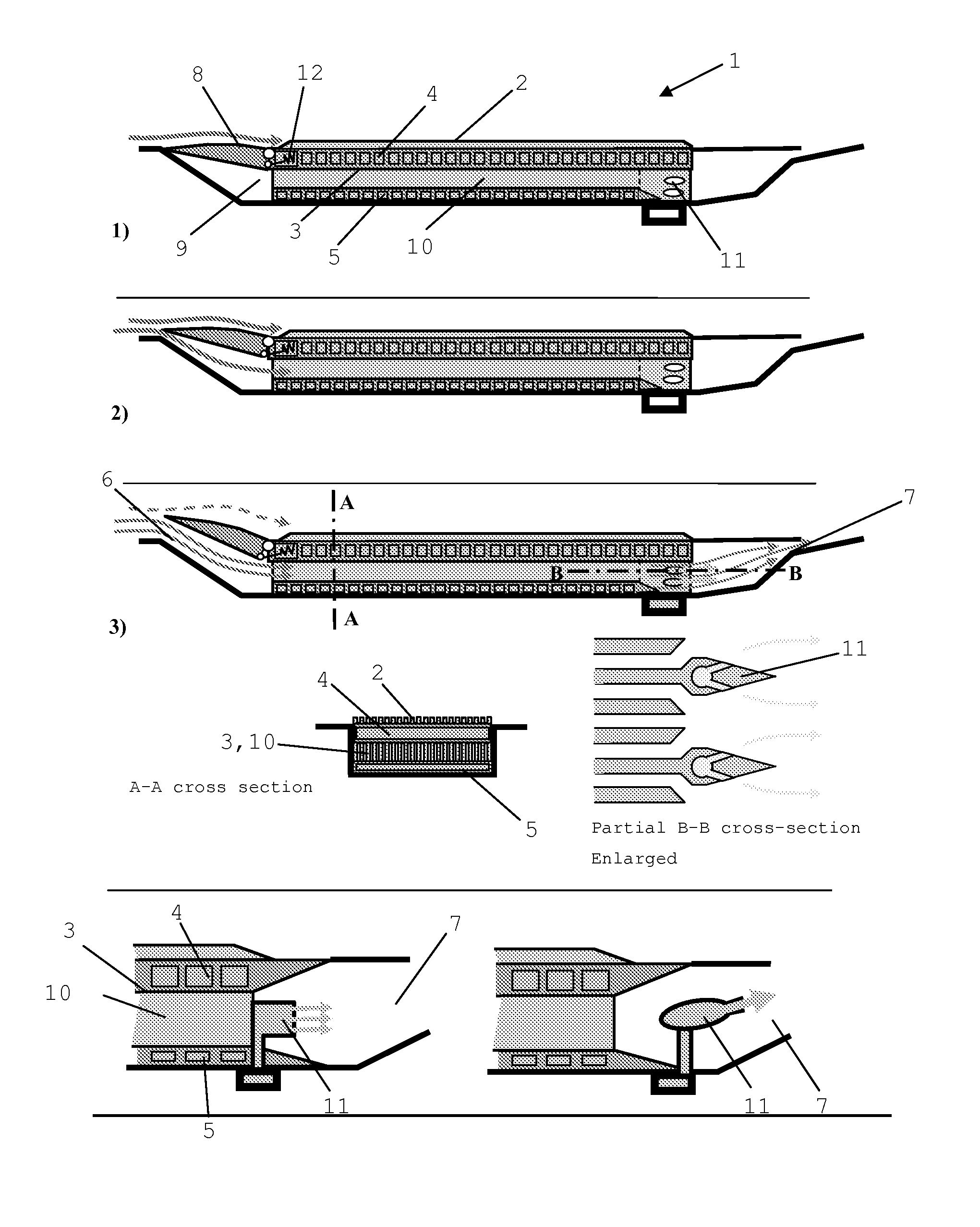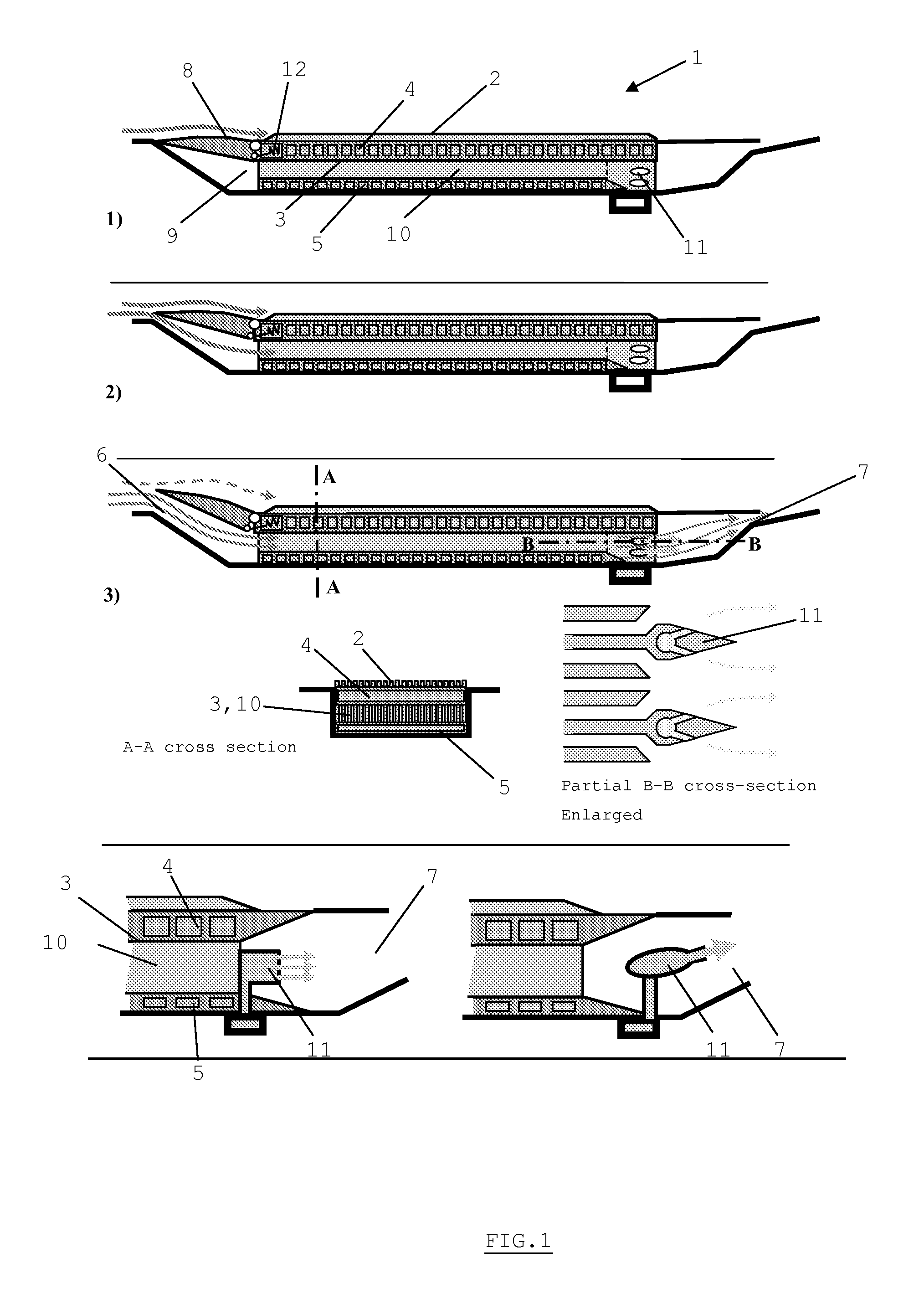Integration of a surface heat-exchanger with regulated air flow in an airplane engine
a heat exchanger and air flow technology, applied in the field of surface heat exchangers, can solve the problems of sfc, aerodynamic disruption in flow, and increase in specific fuel consumption,
- Summary
- Abstract
- Description
- Claims
- Application Information
AI Technical Summary
Problems solved by technology
Method used
Image
Examples
Embodiment Construction
[0054]The surface exchanger as in the invention is illustrated below for embodiments where the exchanger comprises two oil circuits. The present invention also extends to other embodiments where the exchanger comprises only one oil circuit.
[0055]FIG. 1 illustrates a dual-path surface air-cooled oil cooler as in a first embodiment of the invention where the covering means open according to a rotational motion.
[0056]The exchanger 1 comprises a first 2 and a second exchange surfaces provided with fins. It also comprises a first 4 and a second 5 oil circuits and is provided with an air inlet 6 and outlet 7. The inlet 6 comprises covering means 8 such as a duct. The second exchange surface 3 and the second oil circuit 5 are positioned inside a cavity 9, while the first surface 2 is located outside the cavity 9. In the illustrated example, the duct opens toward the outside of the cavity and then forms a duct favoring the air inlet under its inner surface. Alternatively (not shown), the du...
PUM
 Login to View More
Login to View More Abstract
Description
Claims
Application Information
 Login to View More
Login to View More - R&D
- Intellectual Property
- Life Sciences
- Materials
- Tech Scout
- Unparalleled Data Quality
- Higher Quality Content
- 60% Fewer Hallucinations
Browse by: Latest US Patents, China's latest patents, Technical Efficacy Thesaurus, Application Domain, Technology Topic, Popular Technical Reports.
© 2025 PatSnap. All rights reserved.Legal|Privacy policy|Modern Slavery Act Transparency Statement|Sitemap|About US| Contact US: help@patsnap.com



